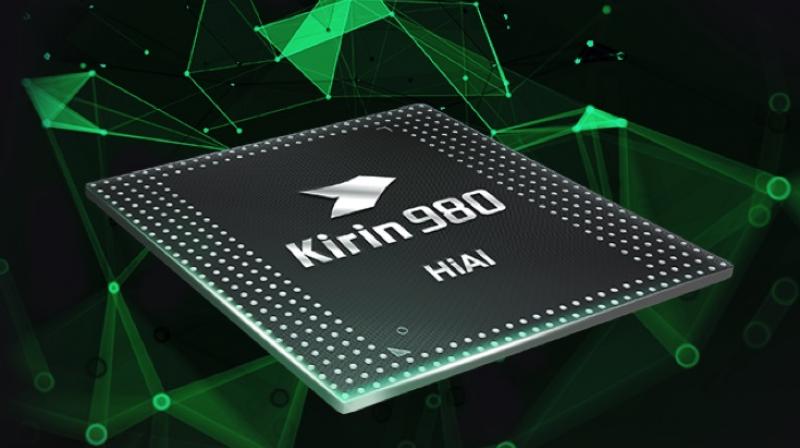Huawei introduces Kirin 980 7nm SoC with AI capabilities
The TSMC 7nm process technology enables Kirin 980 to pack 6.9 billion transistors, 1.6 times of the previous generation.

Huawei, recently introduced industry’s first commercial 7nm SoC, the Kirin 980 equipped with AI capabilities for enhancing performance, efficiency, connectivity features, and Dual NPU AI processing power. Compatible with 5G, it is manufactured with Taiwan Semiconductor Manufacturer Company’s (TSMC) that is claimed to enable quicker app launch times, better multi-tasking and a smoother user experience.
The TSMC 7nm process technology enables Kirin 980 to pack 6.9 billion transistors, 1.6 times of the previous generation. Compared to the 10nm process, the 7nm process is said to deliver 20 per cent improved SoC performance and 40 per cent improved SoC power efficiency.
The Kirin 980 is also the first SoC to embed Cortex-A76 based cores, which are supposed to be more powerful and efficient compared to their previous generation. The Kirin CPU subsystem uses an intelligent Flex-scheduling mechanism that creates a 3-level energy efficiency architecture consisting of two super-big cores based on Cortex-A76, two big cores based on Cortex-A76, and four little cores Cortex-A55.
Compared with the traditional big.LITTLE design, this solution designates the large high-performance cores to handle immediate, intensive workloads; the large, high-efficiency cores to provide sustained performance; and ultra-efficiency cores to tackle every day, light activities with extreme power efficiency. Running at higher clock speeds compared to the prior generation, Kirin 980 enables quicker app launch times, better multi-tasking and a smoother user experience, as told by Huawei.
Huawei has integrated the Mali-G76 GPU into the Kirin 980 to deliver improved gaming experiences. Debuting with the Kirin 980, Mali-G76, as per Huawei, offers 46 per cent greater graphics processing power at 178 per cent improved power efficiency over the previous generation. Mali-G76 also features a clock boosting technology that utilizes AI to intelligently identify gaming workloads and adjust resource allocation for optimal gaming performance.
The dual NPU Kirin 980 elevates the on-device AI experience with greater processing power and intelligence. The Kirin 980 gets dual NPU which reportedly results in an image recognition capability that is greater than the sum of two — the Kirin 980 can recognize up to 4,600 images per minute, up 120 per cent compared to Kirin 970. Additionally, Kirin 980 supports common AI frameworks such as Caffee, Tensorflow and Tensorflow Lite, and provides a suite of tools to simplify the difficulty of engineering On-Device AI.
Huawei also integrated its proprietary fourth-generation ISP into the SoC which should provide better support for multi-camera configurations, as well as an all-new HDR color reproduction technology that can manipulate picture contrast to highlight objects on various parts of an image.
Huawei says Kirin 980 utilizes the Multi-pass noise reduction solution that removes artifacts without scrubbing away image details, resulting in better quality on images taken in low-light scenarios. Another feature of the ISP is improved motion tracking. With the aim to provide the best connectivity to users of Kirin 980-powered devices, Huawei integrated the world’s first modem supporting LTE Cat.21 with a peak download speed of 1.4Gbps.
Click on Deccan Chronicle Technology and Science for the latest news and reviews. Follow us on Facebook, Twitter.

